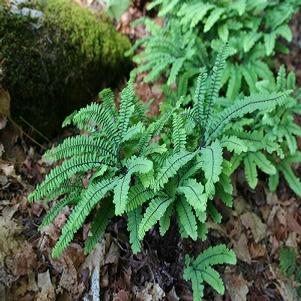General Description
Bloom Description: Numerous tiny white blossoms on a raceme-shaped inflorescence in late spring.
Growth Habit & Shape: large, compact, shrubby shape.
Soil Preferences: Red elderberry thrives in moist yet well-drained, humousy, loamy, and nutrient rich soils of neutral to slightly acidic Ph. However, it is also found on a wide range of soil types including sandy and silty soils.
Root Description: Dense roots and suckers.
Garden Uses: Works as an accent or small grouping in a moist, shady or open woodland garden. Small suckering colonies will naturalize over time.
Best Management & Maintenance: Cut some or all stems to the ground in winter to rejuvenate and get desired bushy growth during the growing season. The plant will regenerate well if it has adequate moisture and light. Prune deadwood, diseased and damage stems in anytime.
Common Problems: Weak branches can break with snow and wind. Can be prone to canker, powdery mildew, leaf spot, borers, spider mites and aphids.
Benefits
Ornamental Value: The dark red berries that grow on a cone shaped raceme at the apex of the branches in mid summer offer a stunning display. Fruits are considered poisonous to humans when raw, but attractive to wildlife.
Wildlife Benefits: Red elderberry flowers are pollinated by hummingbirds, and many mammals and birds eat the berries and leaves. The pithy stems provide nesting cavities for a number of native solitary bees. The Sambucus genera is a larval host for a known 37 species of butterlies and moths. Some include the white-lined sphinx, imperial moth, polyphemus moth, cecropia moth, and the whitemarked tussock moth.
Other Practical/Environmental Benefits: Can be live staked for stream bank erosion control. Rain gardens that stay moist. A shade tolerant shrub.
Use in place of:
Ecology
Habitat:
Sambucus racemosa is cirumpolar, meaning its range is widespread mainly throughout northern temperate regions of North America, Europe, and Asia. In the northeastern United States this shrub is found in late successional forests, where there is humus and nutrient rich soil, ample moisture, and extra light in forest openings. It grows in lowlands and uplands along streambanks, swamp edges, mountain slopes and ravines.
Response to Disturbance: Per Go Botany: "Red elderberry is a tall shrub that grows best in forest openings; its seeds can remain dormant for many years until a gap opens and stimulates germination, sometimes on "nurse logs." It can also stump-sprout from the root crown following cutting or fire."
Native State Distributions:
Canada: CA: AB, BC, LB, MB, NB, NF, NS, ON, PE, QC, SK, YT
"USA: US: AK, AZ, CA, CO, CT, GA, IA, ID, IL, IN, KY, MA, MD, ME, MI, MN, MO, MT, NC, ND, NH, NJ, NM, NV, NY, OH, OR, PA, RI, SD, TN, UT, VA, VT, WA, WI, WV, WY
Wetland indicator status: FACU: Usually occurs in non-wetlands, but occaisionally in wetlands.
Companion Plants:
Trillium sp. (Trillium), Adiantum pedatum (maidenhair fern), Actaea racemosa (black cohosh), Coptis trifolia (goldthread), Maianthemum racemosum (Solomon's plume)
References
Return to Top

